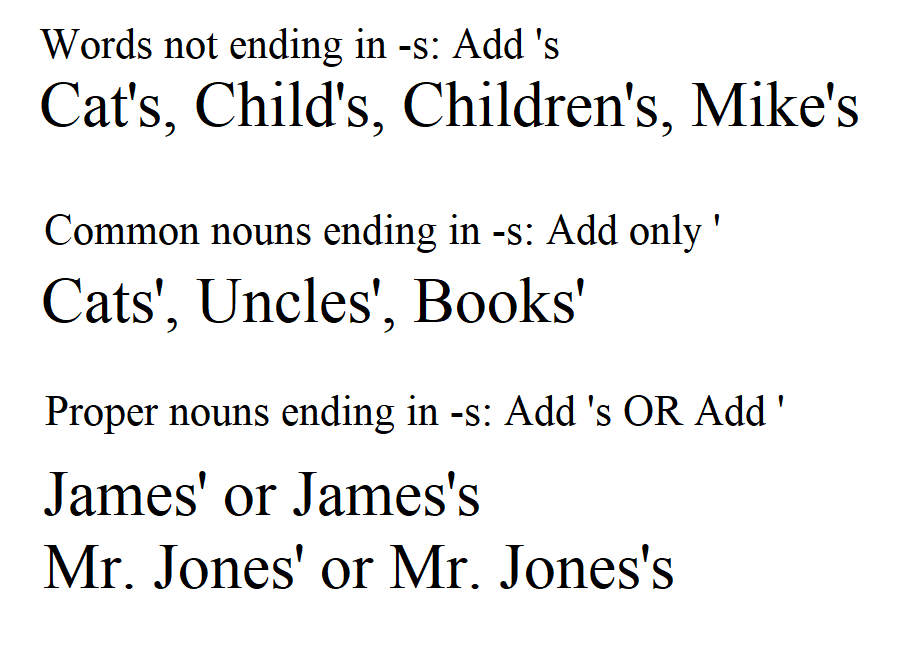Possessive Noun
- Possessive nouns are used to show ownership.
- Singular possessive nouns are created by adding 's to the end of the noun. E.g. dog -> dog's
- For pronouns like James, you can add 's or just an apostrophe ('). E.g. James -> James' or James's
- For plural possessive nouns, if the noun ends in 's', add an apostrophe only at the end. If not, add 's. E.g. dogs -> dogs', children -> children's
Let's discuss possessive nouns. These are words that tell us who or what something belongs to.
Possessive Singular Nouns
A singular noun is made possessive by adding an apostrophe followed by 's'. This rule is the same whether the singular noun ends in an 's' or not. The apostrophe + s ('s) is showing ownership. You put a possessive noun before another noun.

Examples:
-
This is the dog's bone.
"dog's" = possessive noun. "bone" = noun.
-
These are my child's toys.
"child's" = possessive noun. "toys" = noun.
-
That is James's book
"James's" = possessive noun. "book" = noun.
-
This is Chris's bike
"Chris's" = possessive noun. "bike" = noun.
Possessive Plural Nouns
A plural noun is a noun for multiple things. When making a plural noun possessive, you simply add an apostrophe after the final 's' if the plural noun already ends in 's'. However, if the plural does NOT end in 's', add 's like we did with singular possessive nouns.

Examples:
-
These are the dogs' bones.
There are many dogs. dogs' = possessive noun. bones = noun.
-
This is the children's toy.
There are many children. children's = possessive noun. toy = noun.
Pratique este tópico com o AI English Tutor
AI English Tutor irá lhe ensinar a gramática e praticá-la com você em formato de conversação. Além disso, mais de 100 questões práticas sobre este tópico para consolidar sua compreensão.
Experimente ALULA gratuitamente em seu telefone ou tablet








Você tem alguma dúvida sobre esta lição? Pergunte na seção de comentários, abaixo.